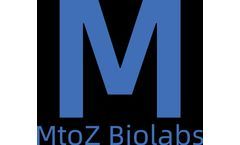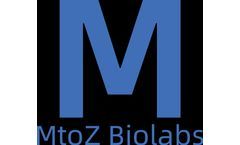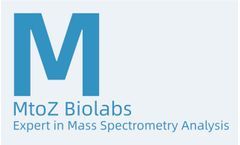Disease Model Development Articles & Analysis: Older
70 articles found
Knockin cell line generation represents a pivotal advancement in genetic engineering, providing vital tools for biological research and therapeutic development. This process involves the integration of specific DNA sequences into precise loci within the genome, allowing scientists to explore gene function, model diseases, and ...
As we step into 2024, the global health landscape is increasingly focused on combatting viral infections, which continue to pose significant threats to public health. The COVID-19 pandemic has illuminated the critical need for innovative strategies in antiviral research, and scientists worldwide are embarking on groundbreaking projects to develop more effective therapies, vaccines, and preventive ...
Introduction Microarray printing technology has revolutionized the field of genomics and proteomics, and its application in glycobiology is no exception. Glycobiology, the study of carbohydrates and their biological functions, relies heavily on the ability to analyze large-scale carbohydrate interactions. Microarray printing in glycobiology enables the precise and high-throughput analysis of ...
Glycosylation site detection refers to identifying the location where glycosylation occurs in biomolecules. Glycosylation is a biochemical modification process that involves linking sugar molecules to other biomolecules (such as proteins, nucleic acids, or lipids), thereby affecting their structure and function. Glycosylation plays a critical role in organisms, but it may also be associated with ...
When we talk about antibody sequencing, we often think of issues related to disease treatment and improving human health. Nanobody sequencing provides us with a more precise and efficient solution. Nanobodies, also known as single-domain antibodies, are antibodies composed of a single functional domain. They have the advantages of small size, high stability, and good penetration, and therefore ...
The exact cause of breast cancer is not completely understood, but factors such as genetics, hormone situations, and lifestyle choices can increase the threat of developing the disease. Common symptoms of breast cancer include a lump or mass in the breast, changes in the size or shape of the breast, and nipple discharge. ...
Post-translational modifications (PTMs) of histones are crucial for protein structure regulation, playing key roles in gene expression regulation, DNA repair, cell signaling, and more. These PTMs of histones can be achieved by adding or removing different chemical groups or proteins, thus affecting chromatin structure and function. Here are some common types of histone PTMs. 1. Acetylation The ...
These drugs are usually designed to interact with specific targets (such as enzymes, receptors, and ion channels), and modify their activities to treat or prevent diseases. Developing effective small-molecule anti-cancer drugs is viewed as a promising approach to fight against cancer. ...
Imagine a world where diseases like cancer, Alzheimer's, and Parkinson's could be diagnosed and treated at the molecular level, long before symptoms even appear. This is the promise of fluorescent biopolymers, a revolutionary new class of materials that could transform the field of biomedical research. What Are Fluorescent Biopolymers? At their core, biopolymers are simply long chains of ...
ByMatexcel
Lipids are the basic substances that make up biological membranes. Through lipid-lipid interactions and interactions between lipids and other biomolecules, a complex network of lipid metabolism is formed, which is involved in a large number of life activities. By studying lipid extracts, information about the lipidome can be obtained. Lipidomics studies lipids in organisms at a systematic level, ...
Therefore, diagnostic development for rare diseases is needed, aiming to provide fast and reliable strategies for disease identification and detection. ...
Introduction The human body is a complex network of genes and proteins, each playing a crucial role in maintaining our health. One such gene, DNM1L, has garnered significant attention in recent years due to its vital functions and its association with various diseases. In this blog post, we will delve into the world of DNM1L, exploring its function, the diseases it is linked to, and the ...
Rare diseases are characterized by their low prevalence, affecting a small number of people across the world. These diseases often come with significant challenges, including accurate diagnosis, availability of effective treatments, and limited resources for research and development. However, recent advancements in diagnostics technology hold promise for speeding up the field of rare disease ...
In response to these challenges, major pharmaceutical companies have shifted from targeting common diseases to developing drugs for specific diseases. At the same time, these companies are constantly looking for new technologies for new drug development, such as high-throughput screening technology, DNA encoded chemical library, ...
To date, several excellent models have already been developed, such as the GAA-knockout mouse model for Pompe’s disease and the Sgca-null mouse model for α-sarcoglycanopathy. Some of these have already led to the development of much-needed therapies such as ERTs. Nevertheless, there ...
Abstract Background: Rheumatoid arthritis (RA) is a systemic autoimmune disease characterized by chronic inflammation of synovial joints. Anticitrullinated protein autoantibodies are detected by the CCP test in early disease and predict the development of erosive disease as well as extraarticular manifestations. We recently reported that many RA patients have anti-citrullinated albumin (ACA) ...
Diabetes, specifically Type 1 and Type 2 Diabetes Mellitus, remains one of the most commonly encountered metabolic diseases worldwide. The complexity and diversity of these conditions necessitate the development of detailed medical models for a comprehensive understanding of the diseases. ...
The intricate nature of cellular growth and proliferation has been a fascinating subject of study for cell biologists for many decades. Recently, with the advent of cutting-edge gene manipulation and control techniques, increasing emphasis has been laid on comprehending the role of epigenetic induction in facilitating cell growth. This article focuses on shedding light on the ingenious process of ...
What Are DEGs in Genetics? DEGs, or Differentially Expressed Genes, are genes whose expression levels show significant differences between two or more conditions or experimental groups. In genetics and genomics research, gene expression refers to the process by which information encoded in a gene's DNA sequence is converted into functional proteins or RNA molecules. When studying gene ...
Another advantage of scRNA-seq in drug development is the selection of relevant preclinical disease models. Traditional disease models often fail to recapitulate the cellular heterogeneity observed in human tissues, limiting their predictive value for drug responses. By profiling patient samples using scRNA-seq, ...














